
Transit Briefs: BART, Denver RTD, Metra, Sound Transit
Written by Marybeth Luczak, Executive Editor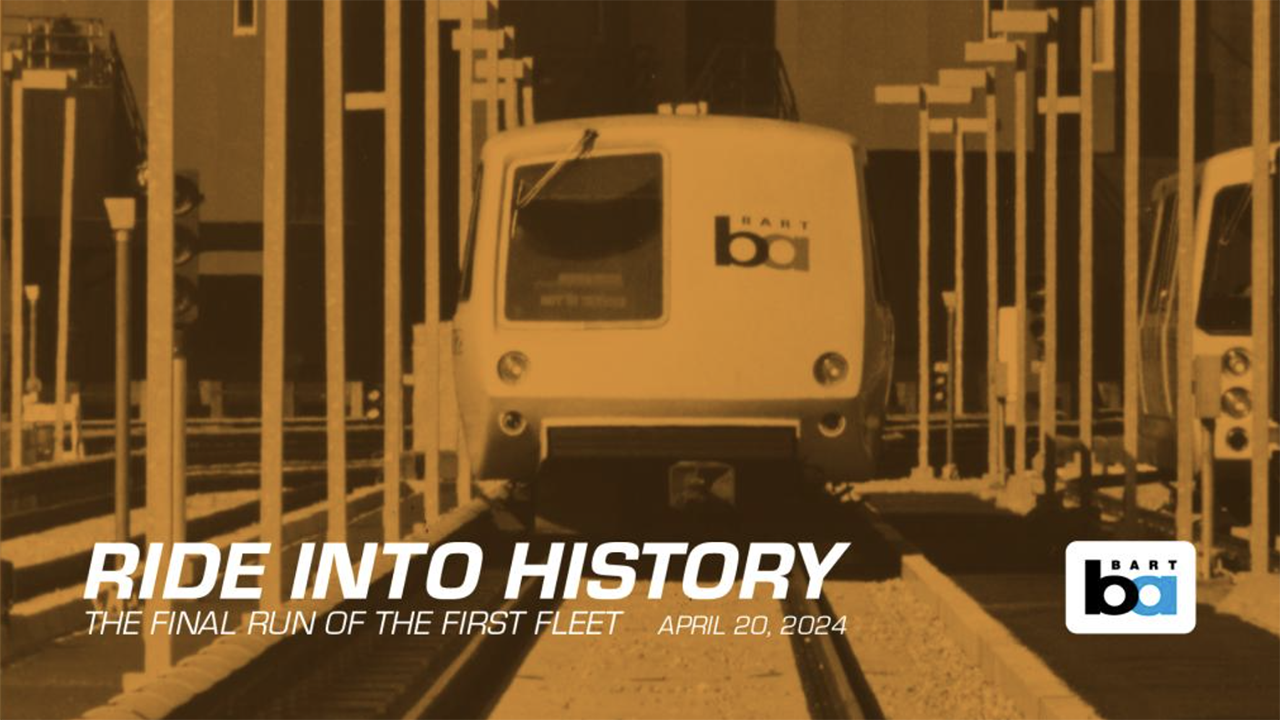
BART on April 20 will hold a retirement ceremony and final dispatch of its legacy trains that have been in service for more than half a century. The event, “Riding into History: Final Run of the First Fleet,” will take place at Oakland’s MacArthur Station.
San Francisco Bay Area Rapid Transit District (BART) will fully retire its legacy trains next month and is advancing a systemwide fare gates project. Also, Denver (Colo.) Regional Transportation District (RTD) launches an elevator pilot program and joins the White House’s “Challenge to Save Lives from Overdose” initiative; Chicago’s Metra plans a new layover yard near the McHenry County community; and Seattle’s Sound Transit will test new Link LRV (light rail vehicle) seat material.
BART
BART on April 20 will hold a retirement ceremony and final dispatch of its legacy trains that have been in service for more than half a century. The event, “Riding into History: Final Run of the First Fleet,” will take place at Oakland’s MacArthur Station.
Following the ceremony, the public will have an opportunity to board a legacy train and ride approximately 24 miles from MacArthur to Fremont Station, mirroring the initial service BART provided when it opened Sept. 11, 1972. According to the transit agency, every passenger must pay for the ride with their Clipper card.
BART said it is able to completely retire the legacy fleet due to “the success of the Fleet of the Future project,” which includes 775 new cars.
BART placed its first car order with Bombardier in 2012, for 410 cars, and exercised an option for an additional 365 in 2013. Alstom, which acquired Bombardier on Jan. 29, 2021, is supplying the new cars; they are replacing legacy cars built by Rohr Industries or Alstom.
Currently, 696 new Fleet of the Future cars—30 more cars than the legacy fleet inventory—are certified for service. As of March 1, 2024, 701 cars are on the BART property, 384 are in service, and 20 cars per month are now being delivered, which is twice as many as when the new cars first began to be delivered to the Hayward test track in 2016, BART reported. The new cars began entering revenue service in 2018.
While the April 20, 2024, trip will be the final time the public will be able to ride the legacy fleet, it won’t be the last opportunity to spend time with the historic vehicles, according to BART. Three legacy cars will be headed to the Western Railway Museum in Suisun City for preservation. Those cars, which include the “iconic sloped-front A car,” will be the only cars to be displayed at a museum. A handful of other legacy cars will be transferred to those who successfully submitted proposals to repurpose the cars for short-term rentals, entertainment venues, and training facilities. Most legacy cars, however, have been recycled, BART said.
“These train cars are part of the history of the Bay Area,” BART General Manager Bob Powers said. “While we are excited to modernize the system, we recognize the profound cultural importance of these cars, and we want to celebrate their rich history and give them a proper send off.”
Meanwhile, BART is continuing its Next Generation Fare Gate program. It is replacing the existing accessible fare gate near the elevator on the platform level of Civic Center Station with a new gate. The work is set to begin March 22 and wrap up by April 5. Later this summer, BART said it will replace all the fare gates on the Civic Center Station’s concourse level.
The BART Board on April 13, 2023, approved a contract with STraffic America to install new fare gates systemwide (see details below).
On Dec. 28, 2023, BART opened new fare gates at the West Oakland station, where it is testing three different door materials: polycarbonate, polycarbonate framed with metal, and polycarbonate with a perforated metal insert. On Jan. 11, 2024, the transit agenct announced the next eight stations to receive new gates: Civic Center, Montgomery, Powell, 24th St, SFO, Fruitvale, Richmond, and Antioch.
Denver RTD
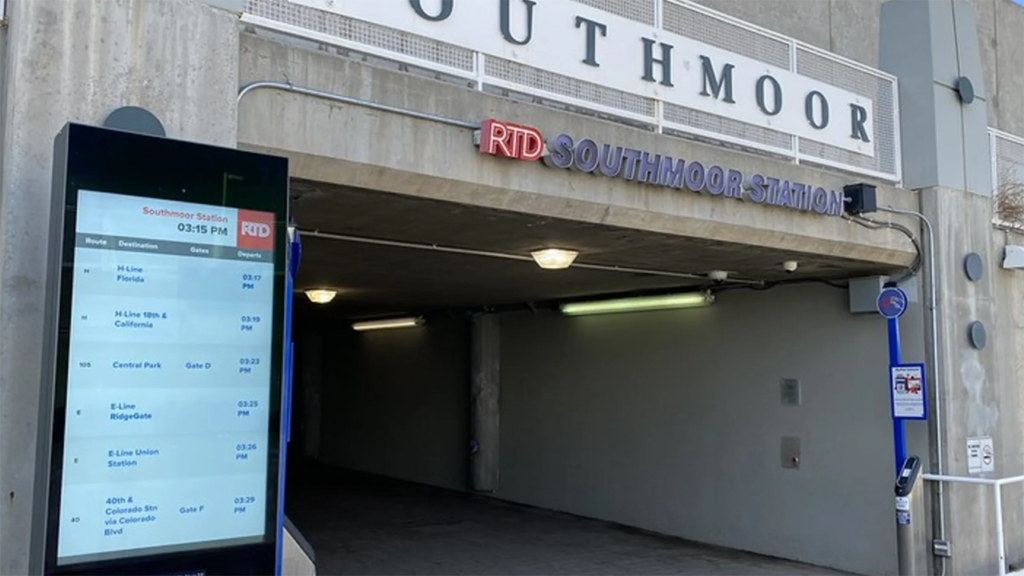
Denver RTD on March 17 launched a 90-day elevator pilot program at the Nine Mile, Colorado and Southmoor light rail stations as part of “an effort to limit illegal activities and address long-standing complaints from customers,” it said. Elevator doors will remain open until a destination floor is selected, close before the elevator is in motion, and remain open at all other times.
This operational adjustment is part of Denver RTD’s Crime Prevention through Environmental Design (CPTED). Over the past year, the transit agency has upgraded lights, improved landscaping, added TV monitors that display security feeds, and installed smoke detectors in public restrooms across its service area. CPTED, it said, is a multi-pronged approach aimed at reducing crime and deterring offenders at stations, stops and facilities.
In January and February 2024, Denver RTD said it received more than 350 reports of “less-than-optimal conditions” for the Nine Mile, Colorado and Southmoor stations. Through mid-June, it will “closely monitor” calls for service, customer comments, and reports of unwanted activities occurring in and around the elevators included in the pilot. According to the transit agency, all data gathered will be collated and compared with baseline metrics provided by RTD Transit Police (RTD-PD) prior to the pilot’s launch. Additionally, qualitative data will be gathered from customers to better understand their experience.
Denver RTD said it will use the data comparisons to determine if there is a reduction in calls and incidents reported, a decline in vandalism and damage to the elevators, and a decrease in customer complaints about cleanliness. The agency will then fully assess the pilot’s effectiveness and overall customer impact. The results will be used to determine if the pilot should continue at the three locations, along with expanding the program to additional elevators across the agency’s system.
“Since January 2022, RTD has had a laser focus on creating a welcoming transit environment that yields a pleasant and seamless customer experience,” Denver RTD General Manager and CEO Debra A. Johnson said. “I am confident that this pilot program will provide customers with a greater sense of personal safety and security, knowing that the agency’s infrastructure is being used for its intended purpose.”
“Every month, RTD receives hundreds of calls for service and customer complaints related to unwanted and illegal activities taking place inside our elevators,” said Dr. Joel Fitzgerald Sr., Chief of Police and Emergency Management. “These activities not only impede customer access to RTD’s services but also obstruct our efforts to create a welcoming transit environment. Setting elevators to a default open status dissuades usage to anything other than what is intended.”
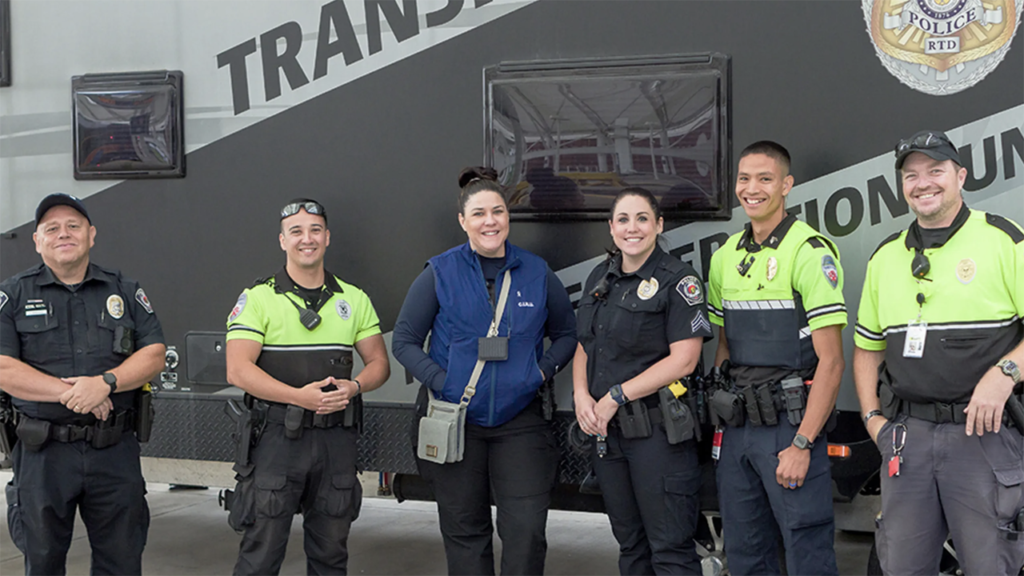
Also, Denver RTD on March 15 reported joining the White House’s “Challenge to Save Lives from Overdose” initiative, which asks public and private partners in transportation, education, hospitality, and entertainment to commit to increased training on and access to lifesaving opioid overdose reversal medications. Massachusetts Bay Transportation Authority (MBTA), San Francisco Bay Area Rapid Transit District (BART), and Washington Metropolitan Area Transit Authority (WMATA) have also joined.
At Denver RTD, Narcan, an opioid overdose reversal medication, is carried by all POST-certified Transit Police officers and contracted security supervisors. Additionally, all contracted security guards have immediate access to Narcan in their vehicles. Narcan is also stored and available at the major transit hubs across Denver RTD’s 2,342-square-mile service area. According to the transit agency, in 2023, Narcan was successfully administered to 103 individuals experiencing an overdose at RTD’s stops and stations, in buses and trains, and at transit facilities. In the first two months of 2024, Denver RTD-PD administered Narcan to 22 individuals.
Metra
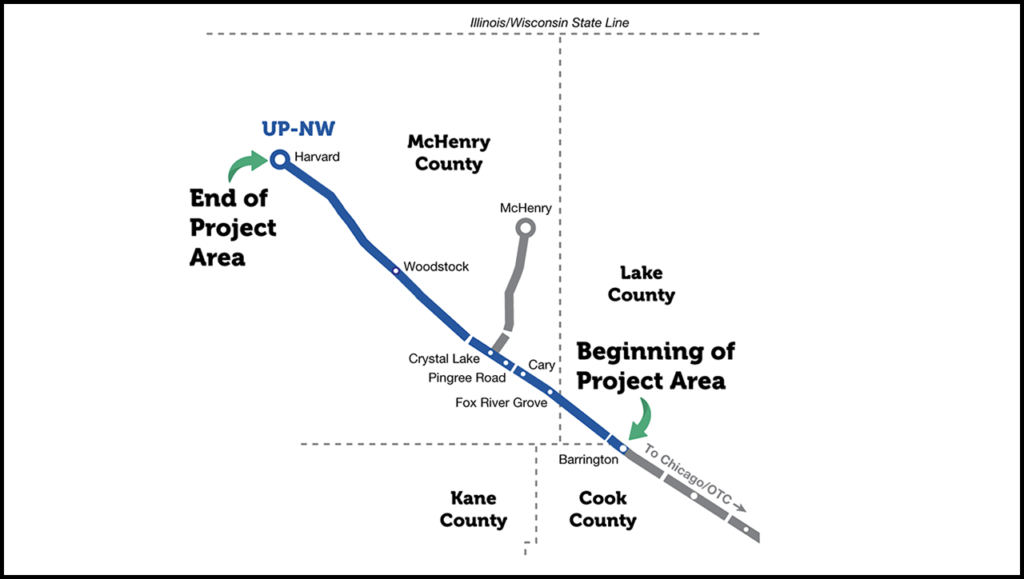
Metra is developing a rail yard relocation and expansion project that it said will support expanded service on the Union Pacific Northwest Line (UP-NW); improve operational efficiency; and maximize safety, security, and personnel time. The Woodstock Layover Yard Project will consolidate operations from the current Barrington and Crystal Lake yards at a larger, modernized facility near Woodstock. Additionally, it is expected to bring an estimated 100 new jobs to the area, according to the commuter railroad.
The UP-NW Line is Metra’s second-busiest and one of its most capacity-constrained. Today, trains used on the line are stored at the Harvard, Crystal Lake, McHenry, and Barrington yards, as well as on sidings along the main line tracks. The existing yards are surrounded by commercial and residential developments, significantly limiting opportunities for expansion of train storage, according to Metra. With current storage at capacity and limited options to expand the current yards, the railroad is developing a new rail yard to provide the storage needed for additional trains to support growth and ridership along the UP-NW Line.
According to Metra, a project team has evaluated 13 sites along the UP-NW Line between Harvard and Barrington based on available acreage, current and future land use, environmental considerations, and potential to meet the project goals and objectives. There are now two recommended sites near the city of Woodstock that the team will study further. Those sites, Metra said, received the most positive rankings toward meeting the project goals and objectives.
Funding for the initial engineering and design for the project comes from a mix of local, regional, state, and federal funds, including approximately $2 million in federal funding from the Infrastructure Investment and Jobs Act. There is no firm timeline to begin construction, according to Metra. The project team is currently performing preliminary engineering and preparing the project for the National Environmental Policy Act (NEPA) process. The NEPA process is anticipated to be completed in early 2025 along with approximately 30% of the project design.
Metra on March 21 will hold an open house to provide details about the project, the site selection process, potential site locations, environmental considerations, and next steps. The railroad is seeking input from the public and stakeholders within the project area and county on the potential site locations and environmental concerns.
“Modernizing our operations by building state-of-the-art facilities near Woodstock would bring significant improvements for Metra’s riders, our employees, and the surrounding community,” Metra CEO/Executive Director Jim Derwinski said. “I am thrilled to see the Woodstock Layover Yard Project get under way with the engineering and design phase, and I look forward to working with our stakeholders and partners to deliver improved access, safety, and better train service to Woodstock and McHenry County.”
Sound Transit
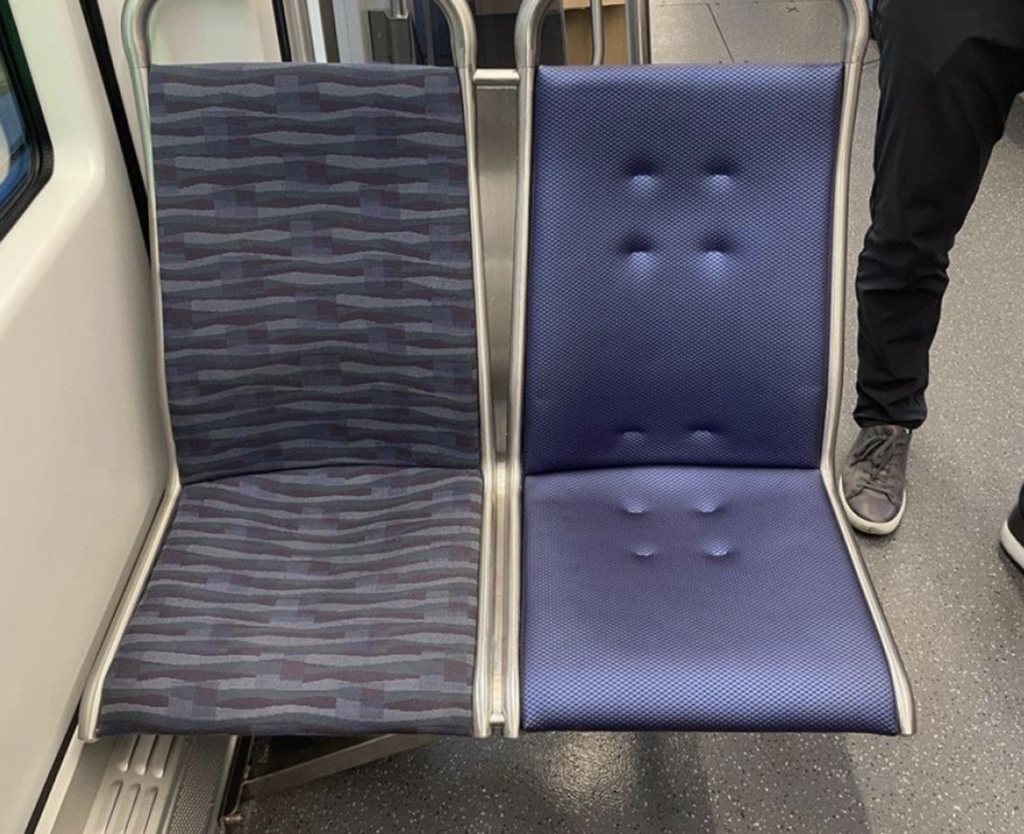
Sound Transit’s Link light rail riders will see new vinyl seat covers as part of a pilot program starting this month. The agency on March 15 reported that it expects 10 trains to be fitted with the seat inserts. Onboard these trains, and 10 trains with the existing seats, riders will find posters with a QR code that will direct them to a survey where the agency can collect their feedback about the Link seats.
The pilot will run for about three months, after which the new vinyl seats will be removed while the project team gathers the feedback and decides next steps, according to Sound Transit.
In related news, DART has upgraded rider seating on more than 20 LRVs, which are now rotating between service on the Orange, Green, Red and Blue lines. The transit agency has been retrofitting seating with new padding and a vinyl finish, which it said is “sleeker, softer and easier to clean.” The first upgraded LRV went into service in January.
The DART LRV seating upgrade plan was announced last year and covers the refurbishment of more than 16,000 seats, including spare ones created for inventory replacement. In total, the seating on 163 of the oldest LRVs—including 95 that have been in service for 20-plus years—will have the old cloth seats replaced with premium vinyl, DART said. By March 31, DART projects to have more than 40 LRVs retrofitted and in operation, and by June the entire fleet of older LRVs will be in service with refurbished seats.



